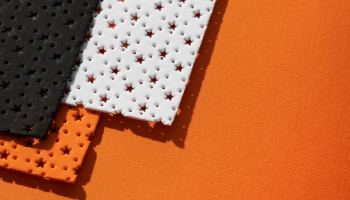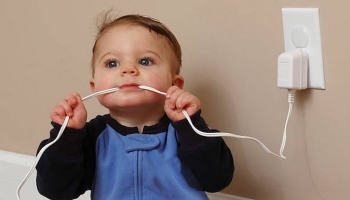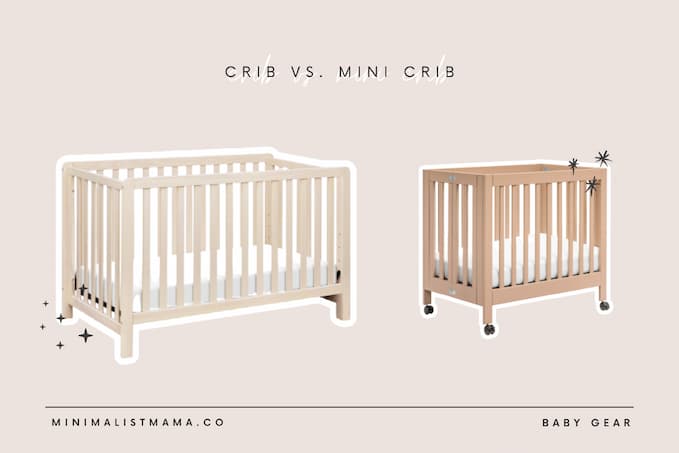
As new parents, one of the most critical decisions is choosing the right crib for your baby. With a wide variety of options available, deciding between a mini crib and a standard crib can be overwhelming. Both have advantages and considerations, so it’s essential to understand the differences to make an informed choice.
The main difference between mini cribs and standard crib lies in their dimensions. Mini cribs are compact and portable, ideal for smaller rooms or shared spaces, while standard cribs offer more space and comfort for your growing baby.
This article will provide a detailed comparison of mini cribs and standard cribs, highlighting their features, benefits, and potential drawbacks. By the end, you’ll better understand which option is best suited for your family’s needs and preferences.
What is a Mini Crib
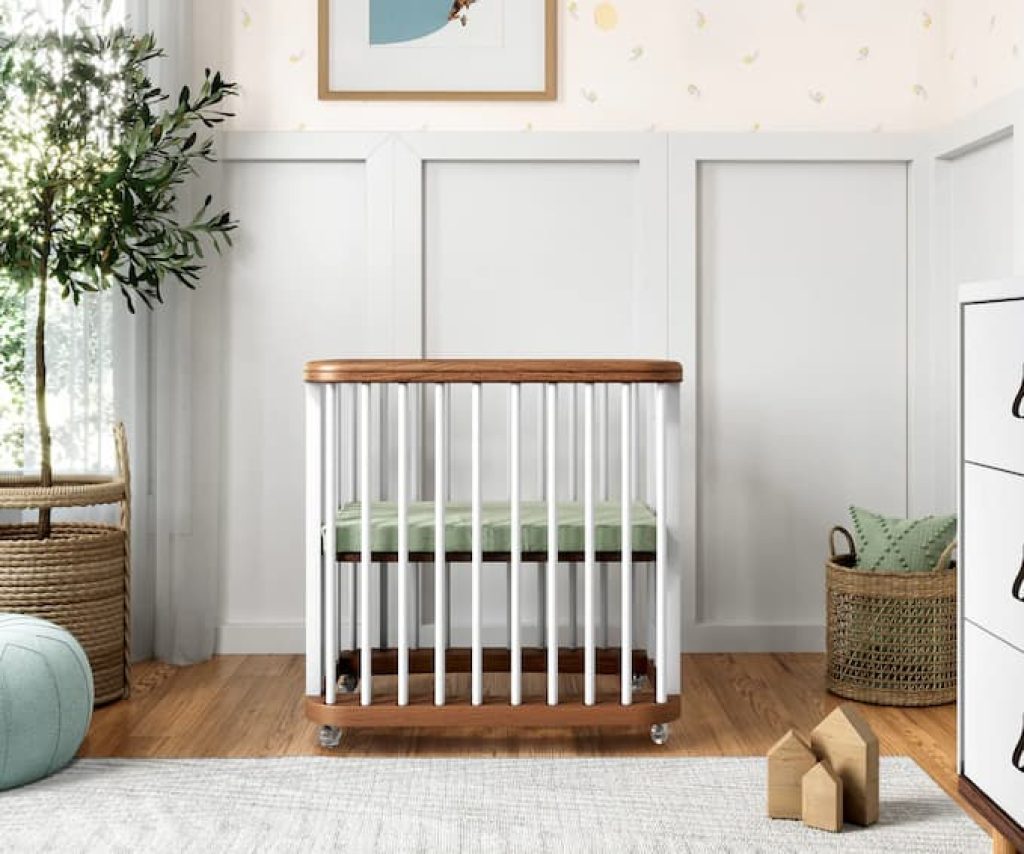
A mini crib is a smaller version of a standard crib designed for infants and young babies. It provides a cozy and compact sleeping space while offering convenience and portability. Mini cribs are typically narrower and shorter than standard cribs, making them suitable for smaller rooms or when space is limited.
How is it Different From a Standard Crib?
The main difference between a mini crib and a standard crib is the size. Mini cribs are significantly smaller in dimensions compared to standard cribs. While standard cribs are more extensive and provide more space for your baby to move and grow, mini cribs offer a snug sleeping area without too much floor space.
Main Uses of a Mini Crib:
1. Space-Saving Option: Mini cribs are famous for their space-saving capabilities, making them ideal for apartments, small nurseries, or shared bedrooms. They allow you to provide a comfortable sleeping environment for your baby without overcrowding the room.
2. Portability: Mini cribs are generally lighter and more portable than standard cribs. They can be easily moved around the house or even taken along on trips, allowing your baby to have a familiar sleeping space wherever you go.
3. Transitional Bed: Mini cribs can be a transitional bed after your baby outgrows the crib stage. Some mini cribs can convert into toddler beds or daybeds, extending their usability as your child grows.
Size Comparison: Mini Crib vs. Regular Crib
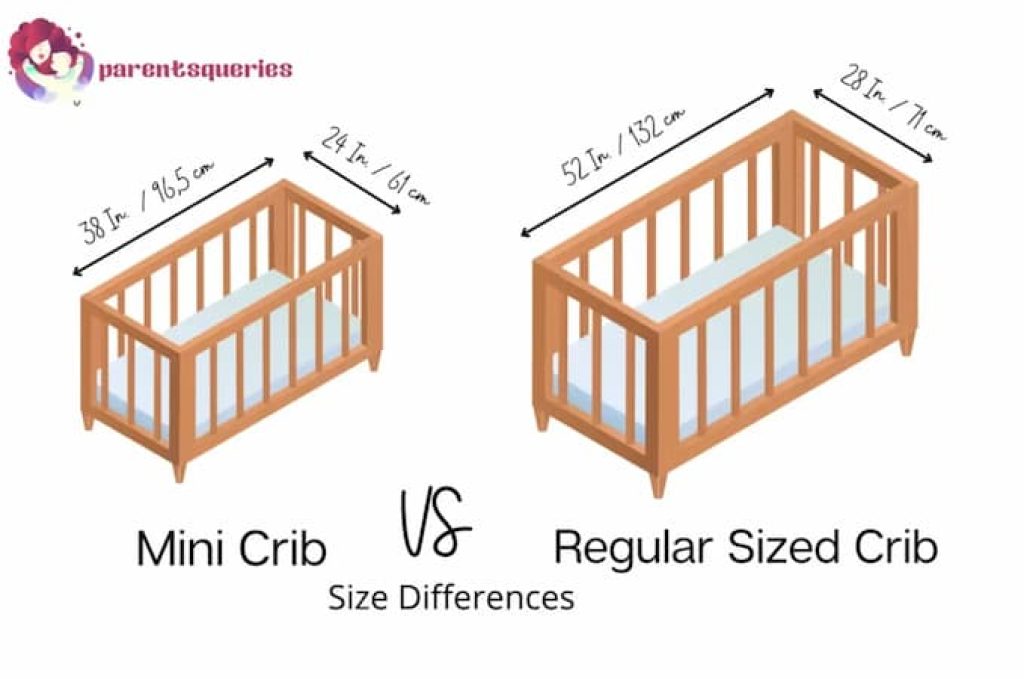
The dimensions of mini cribs and standard cribs can vary slightly between different manufacturers, but here is a general comparison:
Mini cribs, as the name suggests, are significantly smaller than standard cribs. They are designed to provide a compact sleeping space for your little one, making them ideal for smaller rooms, apartments, or shared spaces.
Mini crib mattresses are typically about 24 inches wide and 38 inches long, offering your baby a snug and cozy environment.
On the other hand, standard cribs are larger and more spacious. They are designed to accommodate your baby’s growth and offer ample room for movement. Standard cribs usually measure around 28 inches wide and 52 inches long, providing a generous sleeping area for your child.
The extra space in a standard crib allows for greater comfort and freedom of movement, which can be particularly beneficial as your baby grows and starts to explore more in their sleep.
Other Differences: Crib vs. Mini Crib
In addition to size, several other factors differentiate standard cribs from mini cribs. Let’s explore some of these differences:
Wheels
While not all mini cribs have wheels, many models come equipped with casters or wheels that make them easy to move around. This mobility is beneficial when you need to clean or rearrange the room or prefer to have your baby’s crib in different areas of the house.
On the other hand, regular cribs typically do not come with wheels as they are designed to be more stationary.
Weight
Standard cribs are generally heavier and sturdier than mini cribs due to their larger size and construction. They are designed to accommodate the weight of a growing child and can withstand more wear and tear. Mini cribs, being smaller and lighter, have lower weight limits and may not be suitable for older or heavier babies.
Sheets and Bedding
Due to the size difference, mini cribs require specially sized bedding and sheets made explicitly for mini crib mattresses. Standard cribs, on the other hand, have a wider variety of bedding options available in standard sizes.
It’s important to ensure that you have the correct bedding size for your chosen crib to ensure a safe and comfortable sleep environment for your baby.
Budget
Mini cribs generally tend to be more affordable than standard cribs. The smaller size and more straightforward construction often result in a lower price point.
This can be advantageous for families on a tighter budget or those seeking a temporary sleeping solution. Standard cribs, being larger and offering more features, may have a higher price range.
Pros and Cons of Mini Crib

Mini Crib Pros
1. Space-saving: Mini cribs are ideal for smaller rooms, apartments, or shared spaces with limited space. They provide a comfortable sleeping area for your baby without taking up excessive floor space.
2. Portability: Many mini cribs come with wheels or are lightweight, making them easy to move around the house. This portability allows you to keep an eye on your baby or provide a familiar sleeping space when traveling.
3. Affordability: Mini cribs are often more budget-friendly than standard cribs. If you’re looking for a cost-effective option or a temporary sleeping solution, a mini crib can be suitable.
4. Convertibility: Some mini cribs offer convertible features, allowing them to transform into toddler beds or daybeds as your child grows. This extended usability can provide long-term value and convenience.
Cons of Mini Cribs
1. Limited Lifespan: Mini cribs are designed for infants and younger babies. As your child grows, they may outgrow a mini crib’s size and weight limit faster than a standard crib. This limited lifespan might require an earlier transition to a larger bed.
2. Limited Space for Movement: The smaller dimensions of a mini crib may provide less space for your baby to move and stretch. This may be a consideration if your baby is active or enjoys more freedom during sleep.
3. Specialized Bedding: Mini cribs require specifically sized bedding and sheets designed for mini crib mattresses. This may limit the variety and availability of bedding options compared to standard cribs.
If you ask us, this is the best mini crib on the market (https://amzn.to/47fvc5k)
Pros and Cons of Standard Crib
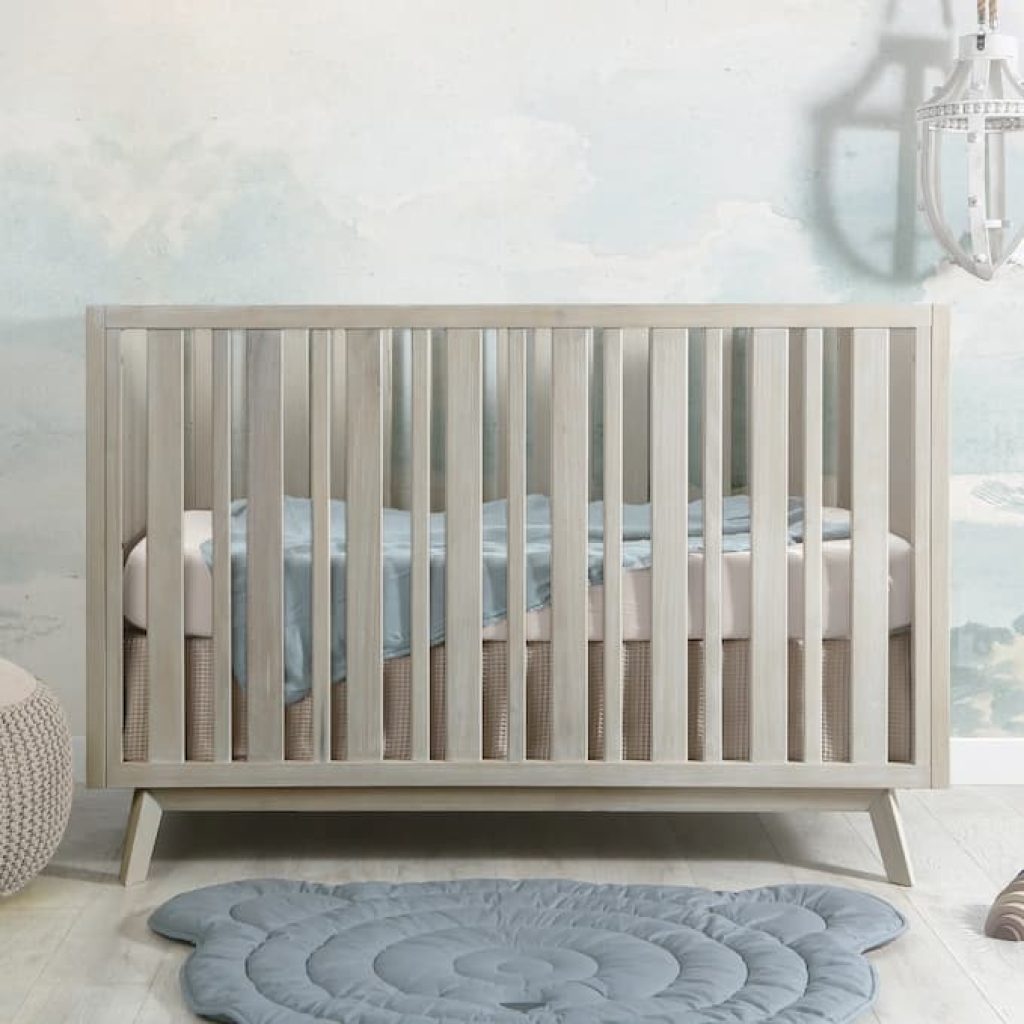
Pros
1. Ample Space: Standard cribs offer more room for your baby to move, stretch, and grow. They provide a comfortable sleeping environment with sufficient space for toys, blankets, and other essentials.
2. Longer Lifespan: Standard cribs are designed to accommodate your child’s growth from infancy to toddlerhood. They can be used longer, eliminating the need for frequent transitions to more extensive beds.
3. Versatility: Standard cribs often come with various adjustable features, such as adjustable mattress heights and convertible options. These features allow you to customize the crib per your baby’s needs and adapt it to different stages, including converting it into a toddler bed, daybed, or even a full-size bed.
4. Wider Range of Bedding Options: Standard cribs have a broader selection of bedding options available in standard sizes. This gives you more choices regarding sheets, mattress protectors, and other bedding accessories.
Cons
1. Space Requirements: Standard cribs are more considerable, requiring more floor space in the nursery or bedroom. If you have limited space or a smaller living area, accommodating a standard crib may pose a challenge.
2. Less Portable: Due to their larger size and weight, standard cribs are less portable than mini cribs. They are not designed for frequent moving and may require disassembly if you need to relocate them within your home.
3. Higher Cost: Standard cribs generally have a higher price tag than mini cribs. The larger size, sturdier construction, and additional features increase the cost.
4. Limited Suitability for Small Spaces: A standard crib may not be the most practical option if you have a small nursery or little room. It can crowd the space or limit your ability to include other necessary furniture or play areas.
Consider these pros and cons when deciding on a standard crib to ensure it aligns with your space availability, budget, and long-term needs. Additionally, always prioritize safety standards and certifications when selecting any crib for your baby.
If you ask us, this is the best baby crib on the market (https://amzn.to/3Y362Tj)
What is a Mini Crib For?
A mini crib is primarily a sleeping space for infants and young babies. It serves the same purpose as a standard crib but is designed to offer certain advantages in specific situations. One common scenario in which a mini crib is utilized is when dealing with small spaces.
If you have a compact nursery, live in an apartment, or need to fit a crib or a twin bed in a shared bedroom, an average mini crib provides a comfortable sleeping area for your baby without occupying excessive floor space.
Portability is another key benefit of mini cribs. They are typically lighter and more portable than standard cribs, allowing easy mobility. This feature is particularly convenient for families who wish to keep their baby close by or require the flexibility to provide a familiar sleeping environment while traveling.
Mini cribs can be moved from room to room or even taken along on trips, providing consistent and safe sleeping space for your little one.
Sometimes, mini cribs are chosen as a temporary or transitional sleeping solution. For instance, parents who plan to co-sleep with their baby in their room for the first few months may opt for a mini crib as a short-term option.
Similarly, if you anticipate transitioning your baby to a larger bed relatively early, a mini crib can be an intermediate step before making the switch.
Mini cribs also find popularity among grandparents or caregivers who may require a crib for occasional use. Their compact size and portability make them convenient for setting up a safe sleeping space at a grandparent’s house or another caregiver’s home.
The ease of assembly, disassembly and the ability to transport the crib makes it a practical choice.
While mini cribs have advantages, it’s essential to consider your specific needs, available space, and your baby’s growth trajectory when deciding on a crib.
A standard crib may be a better choice if you have ample space and prefer a crib that can accommodate your child for an extended period. Ultimately, the decision should align with your family’s preferences and the living arrangements you have in place.
Why Mini Cribs?
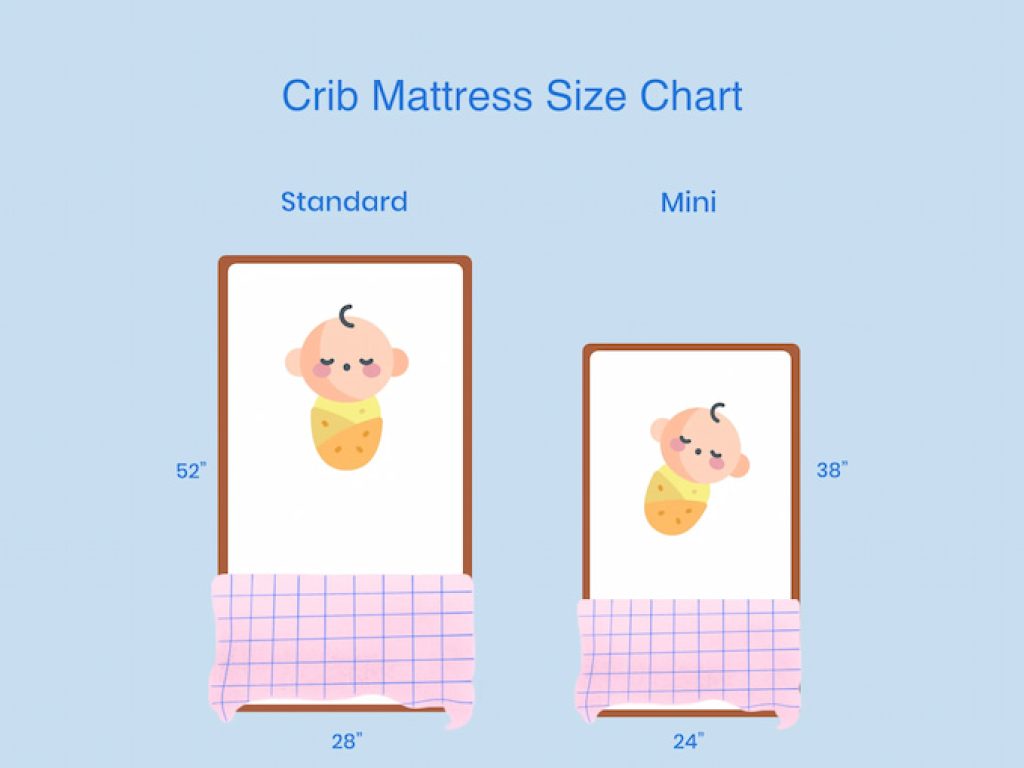
You might consider using a mini crib instead of a regular-sized crib for several reasons. Here are some advantages of mini cribs:
1. Space-Saving: Mini cribs are designed to take up less floor space than a full-size crib. This makes them an excellent choice for smaller nurseries, apartments, or shared bedrooms where maximizing space is essential. If you have limited square footage, a mini crib provides a comfortable sleeping area for your baby without overwhelming the room.
2. Portability: Mini cribs are generally lighter and more portable than regular-sized cribs. They often come with wheels or are lightweight enough to move around the house quickly. This mobility can be advantageous if you prefer to keep your baby’s sleeping space close to you or if you need the flexibility to set up a crib in different areas of your home. Additionally, the portability of a mini crib makes it convenient for travel, allowing your baby to have a familiar sleeping environment wherever you go.
3. Versatility: Most mini cribs offer convertible features, allowing them to transform into toddler beds, daybeds, or even twin beds as your child grows. This versatility extends the lifespan of the crib and provides long-term value. If you’re looking for a crib that can adapt to your child’s changing needs, convertible mini cribs are a practical choice.
4. Affordability: Mini cribs often come with a lower price tag than full-sized crib. The more minor and straightforward construction typically results in a more budget-friendly option. If you’re working with a limited budget or prefer a temporary crib solution, a mini crib can be cost-effective without compromising safety or comfort.
5. Coziness and Security: The compact size of a mini crib can create a snug and secure environment for your baby. The smaller sleeping space can provide a cozy atmosphere that some babies find comforting and conducive to better sleep.
Conclusion
In summary, choosing between a mini crib and a standard crib depends on space availability, portability needs, and budget. Mini cribs are space-saving, portable, and affordable, while standard cribs offer more room for growth and versatility. Consider your specific requirements to select the crib that best suits your needs and provides your baby with a safe and comfortable sleeping environment.
Frequently Asked Questions
When can I move my baby from a mini crib to a crib?
The timing of transitioning from a mini crib to a crib depends on your baby’s size and development. Most babies outgrow mini cribs between 6 to 12 months. It’s essential to monitor your baby’s comfort and safety and transition to a crib when they no longer have enough space or meet the weight limit of the mini crib.
Are mini cribs safe?
Yes, mini cribs are designed to meet safety standards and provide a safe sleeping environment for infants. It’s important to follow the manufacturer’s instructions, use a firm mattress that fits snugly, avoid using additional bedding or pillows, and ensure proper assembly to ensure safety.
Is a mini crib smaller than a pack ‘n-play?
Yes, a mini crib is smaller than a pack ‘n-play. Mini cribs are specifically designed for sleeping, while pack ‘n plays are versatile players that can also function as cribs. Pack ‘n plays tend to be larger and offer additional features like changing stations and storage compartments.
Is a mini crib similar to a bassinet?
While mini cribs and bassinets provide safe sleeping spaces for infants, they differ in size and design. Mini cribs resemble traditional cribs, while bassinets are smaller, more portable, and often have a more lightweight and compact design. Bassinets are generally intended for newborns and younger babies and may have weight or age restrictions.




